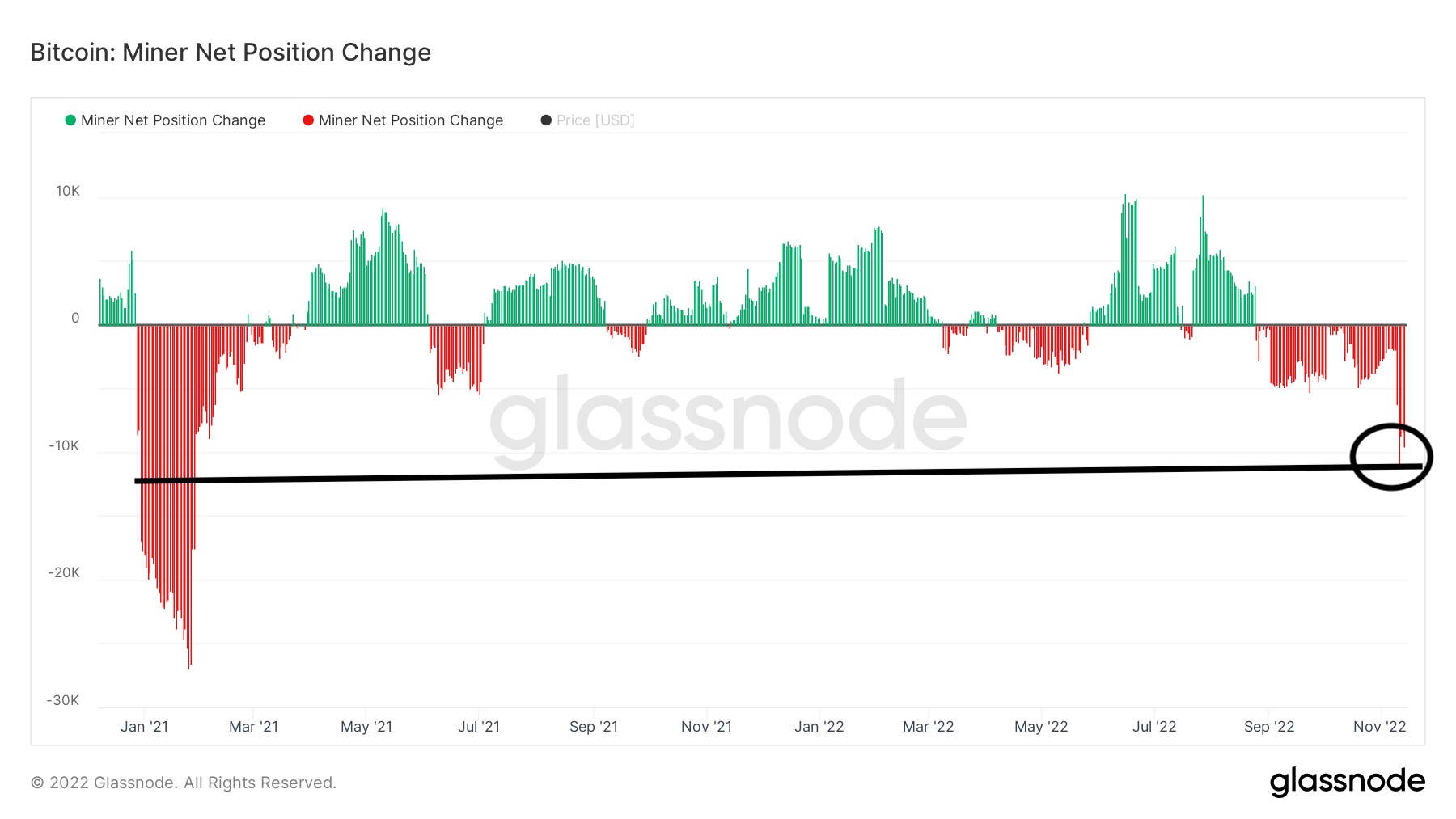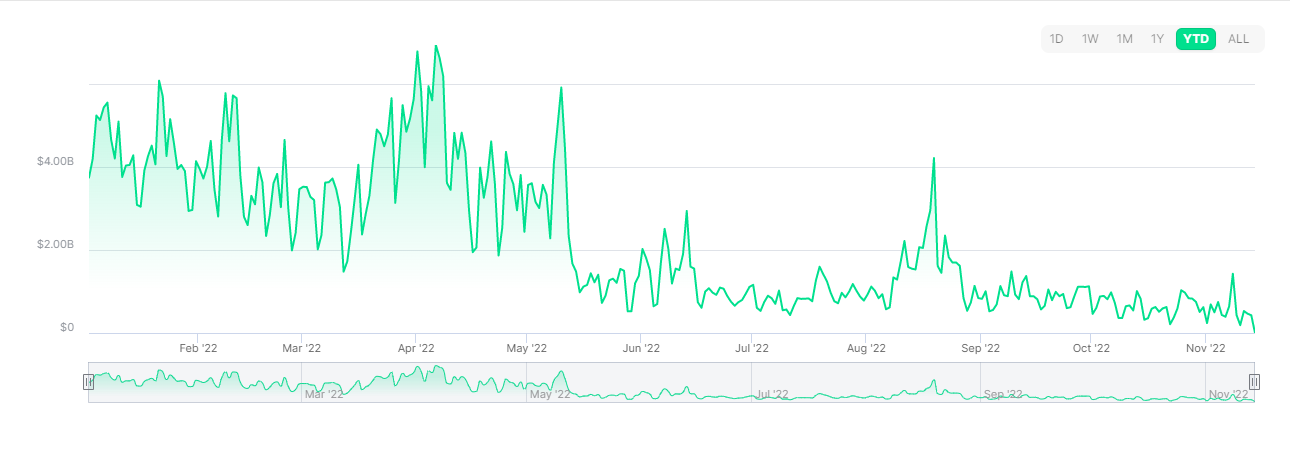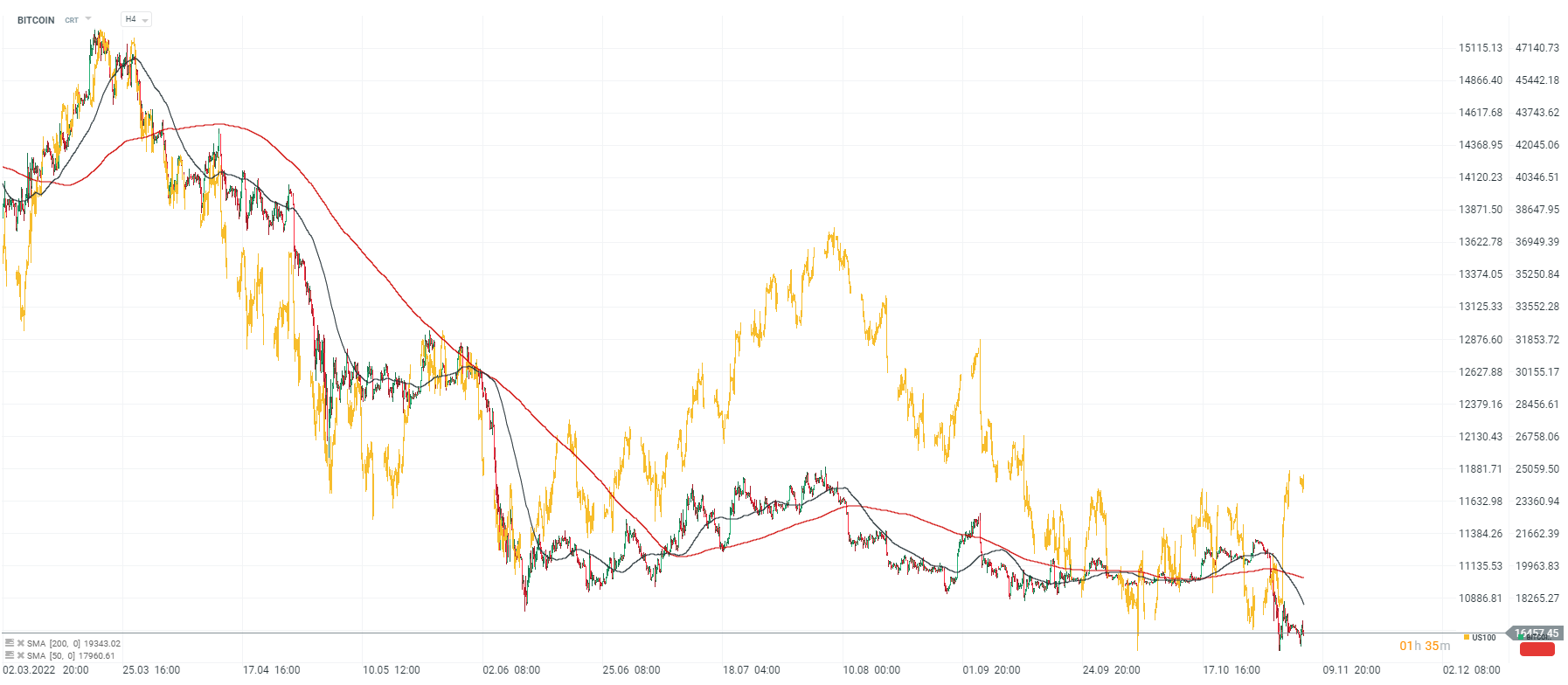The cryptocurrency sector is recording a weak opening to the week. Cryptocurrencies still cannot recover from the bankruptcy of the FTX exchange, and investors fear the scale of the domino effect after the collapse of a major cryptocurrency player:
- Bitcoin costs around $16,500 again, and Ethereum is struggling to stay around $1,200. The major cryptocurrency has strengthened its 'dominance' against losing, smaller cryptocurrencies in recent days, and is likely to continue this trend in the face of declining confidence in the crypto market and massive losses of higher-risk so-called 'altcoins'. Michael Saylor, CEO of Micorstrategy, a company known for its record BTC purchases, among others, pointed to such a scenario. The company's average BTC purchase price is hovering around $30,000 per token, which is in line with the average price of Bitcoin purchases by investors with 'unrealized losses';
- Lael Brainard of the Federal Reserve commented on the collapse of the Sam Bankman-Fried exchange and the billions of dollars in losses that investors have suffered. According to Brainard, the sector should await swift regulation to preserve its 'growth' character. So far, decentralization has proved to be only apparent, with both Luna and FTX influenced by a network of narrowly focused investors.
 The chart shows the average price of Bitcoin purchased by investors in loss (purple) and in profit (blue). The average BTC purchase price for supply in profit is currently around $5,000. The average Bitcoin supply price at a loss indicates levels close to $35,000 and is roughly coincident with the average BTC purchase price paid by Microstrategy. These levels could be important for the future behavior of the price and potentially could also set key 'pain thresholds' for each group of investors. If Bitcoin continues to lose, the average realized supply price of BTC will also fall, a . Previous fluctuations around $20,000 marked the equilibrium from which Bitcoin was knocked out by the FTX bankruptcy. Source: Glassnode
The chart shows the average price of Bitcoin purchased by investors in loss (purple) and in profit (blue). The average BTC purchase price for supply in profit is currently around $5,000. The average Bitcoin supply price at a loss indicates levels close to $35,000 and is roughly coincident with the average BTC purchase price paid by Microstrategy. These levels could be important for the future behavior of the price and potentially could also set key 'pain thresholds' for each group of investors. If Bitcoin continues to lose, the average realized supply price of BTC will also fall, a . Previous fluctuations around $20,000 marked the equilibrium from which Bitcoin was knocked out by the FTX bankruptcy. Source: Glassnode Bitcoin miners supply rose at the fastest pace in nearly 2 years, when they sold off their reserves near the previous bull market peak in January-May 2021. Now the selling is accelerating despite price declines, which heightens investors' concerns and gives bulls hope for the 'miners' eventual capitulation, which has been emblematic of Bitcoin's 'price bottoms in every previous bull market. Source: Glassnode
Bitcoin miners supply rose at the fastest pace in nearly 2 years, when they sold off their reserves near the previous bull market peak in January-May 2021. Now the selling is accelerating despite price declines, which heightens investors' concerns and gives bulls hope for the 'miners' eventual capitulation, which has been emblematic of Bitcoin's 'price bottoms in every previous bull market. Source: Glassnode:format(jpg)/cloudfront-us-east-1.images.arcpublishing.com/coindesk/Y2ZPGM3RGZHQBBWNM23357UXFY.png) The amount of BTC held by miners falls to its lowest level in nearly 10 months signaling a huge increase in supply in November. Source: Glassnode
The amount of BTC held by miners falls to its lowest level in nearly 10 months signaling a huge increase in supply in November. Source: Glassnode
Start investing today or test a free demo
Create account Try a demo Download mobile app Download mobile appMore problems for crypto exchanges:
Crypto.com CEO Chris Marszalek during a live interview told investors to expect a 'tough cryptocurrency winter' but stressed the continued strength of his exchange, which is recording positive cash flow. The nearly 45% drop in the price of the CRO token has raised concerns around another bankruptcy and liquidity crisis;
Crypto.com's average daily exchange volume collapsed from last year's highs of about $4 billion to about $284 million in October. According to Nomics analysts, the volume of withdrawals has increased because users and investors are removing their funds from the platform. In an interview, Chris Marszalek was reassuring and stressed that FTX's collapse 'cost' the exchange only $10 million because it had already managed to recover the $990 million FTX had at its disposal;
Speculation circulated among the industry about cross-lending of cryptocurrencies between exchanges in order to reassure customers and pass review by auditors and regulators. However, the controversy was sparked by a 'slip-up' in the form of a $400 million withdrawal that accidentally went to the Gate.io exchange. This is the second time the company has transferred a huge amount of money by mistake. Previously, $10.5 million went to Melbourne. According to the company's CEO, the funds were not at risk of being lost because the system would not allow them to be sent somewhere where they cannot be recovered. Marshal, however, did not elaborate on what the system meant and why the mistake occurred under such market conditions;
The crypto.com exchange halted GALA, SRM and Ray withdrawals of which SRM was closely linked to the FTX exchange. According to the CEO, Crypto.com never used its own tokens for secured loans, as was the case with FTX and the Alameda Research fund. Marshall also sought to refute allegations around the exchange's massive marketing spending, which appeared as a sponsor in stadiums, on television and Formula One, among other things. According to the CEO, the strategy was to spend 10% or less on marketing and was appropriate despite speculation about the exchange's possible indebtedness;
The AAX exchange froze customer withdrawals announcing the necessary updates to the platform. Users fear that the entity will be next on the list of bankruptcies. BlockFi still has not unfrozen withdrawals, which were blocked in the past week.
 The CEO justified that 20% of Crypto.com's reserves are in Shibu Inu tokens, as 'they are what customers often trade'. He stressed also that everything in Crypto.com reserves is backed 1-to-1. An audit of the exchange is underway, and Marshalek claimed that his exchange and the industry as a whole both need full transparency to continue growing. Source: Coindesk Research, Nansen
The CEO justified that 20% of Crypto.com's reserves are in Shibu Inu tokens, as 'they are what customers often trade'. He stressed also that everything in Crypto.com reserves is backed 1-to-1. An audit of the exchange is underway, and Marshalek claimed that his exchange and the industry as a whole both need full transparency to continue growing. Source: Coindesk Research, Nansen Crypto.com's trading volume shows a massive decline from levels as high as $6 billion in the first half of the year to just a few hundred million today. All exchanges may face the prospect of liquidity risk as customers may still withdraw funds from them for fear of losing them, and trading volume is likely to fall which may further support elevated market volatility. Source: Coindesk, Nomics
Crypto.com's trading volume shows a massive decline from levels as high as $6 billion in the first half of the year to just a few hundred million today. All exchanges may face the prospect of liquidity risk as customers may still withdraw funds from them for fear of losing them, and trading volume is likely to fall which may further support elevated market volatility. Source: Coindesk, Nomics
Bitcoin, H4 interval. The largest cryptocurrency continues to show divergence against the U.S. stock market, with which it has correlated for almost the entire year. This shows that Bitcoin's current downward factors are clearly internal and caused by the threat of systemic risk to the crypto market. This now radically changes the bullish scenario of the bulls, which predicted Bitcoin's rebound as global risk appetite increased. Source: xStation5
This content has been created by XTB S.A. This service is provided by XTB S.A., with its registered office in Warsaw, at Prosta 67, 00-838 Warsaw, Poland, entered in the register of entrepreneurs of the National Court Register (Krajowy Rejestr Sądowy) conducted by District Court for the Capital City of Warsaw, XII Commercial Division of the National Court Register under KRS number 0000217580, REGON number 015803782 and Tax Identification Number (NIP) 527-24-43-955, with the fully paid up share capital in the amount of PLN 5.869.181,75. XTB S.A. conducts brokerage activities on the basis of the license granted by Polish Securities and Exchange Commission on 8th November 2005 No. DDM-M-4021-57-1/2005 and is supervised by Polish Supervision Authority.

